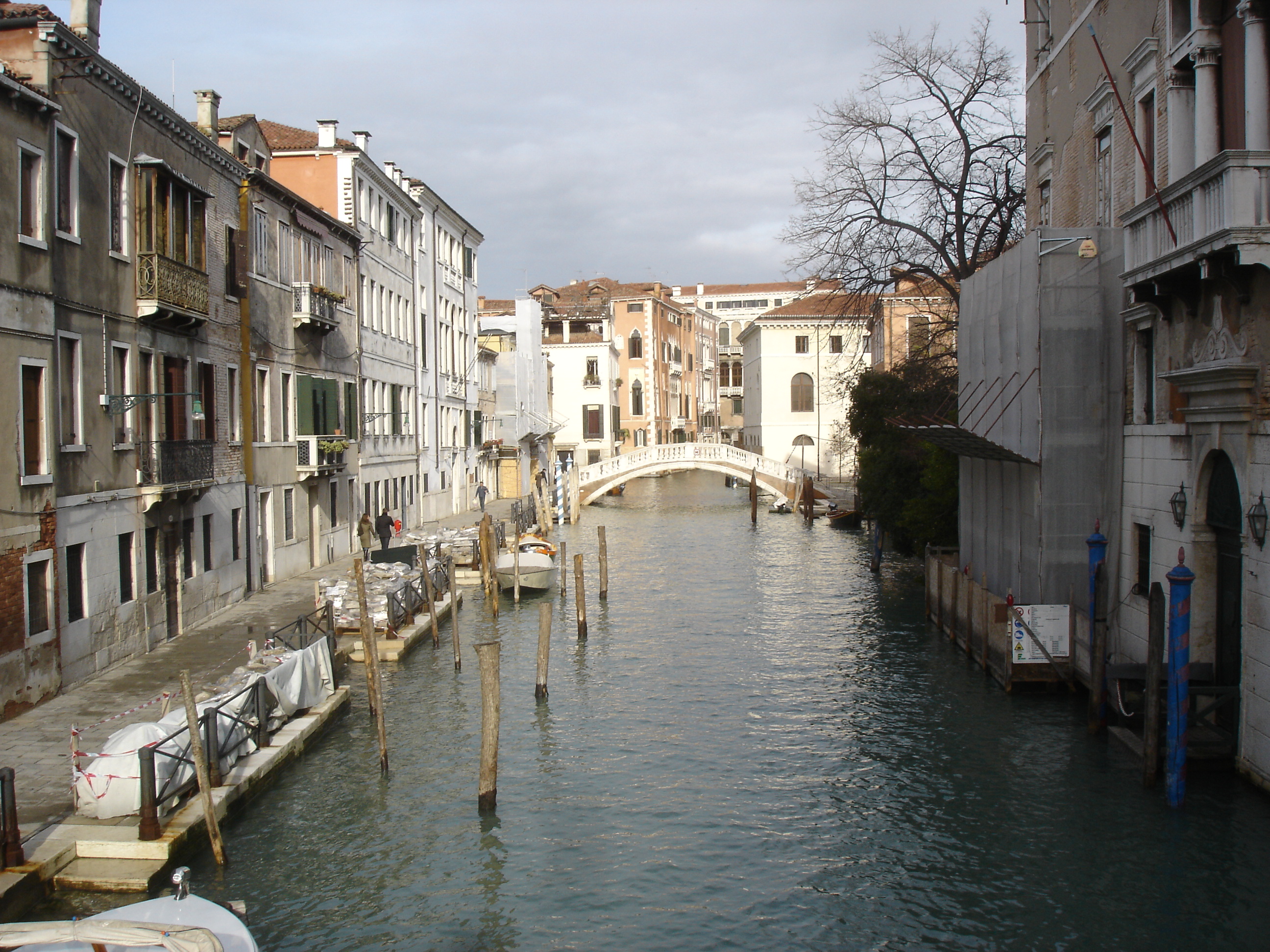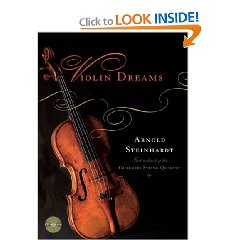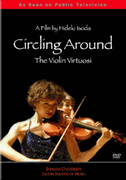
Today, Vivaldi is recognized as the master of the violin concerto…. (http://www.artsjournal.com/palace/2012/04/lamentations-and-ululations-notes-before-a-program.html)
(I). My Journey as An Amateur Violinist
I have taken private violin lessons in my teenage years. My teacher, Mr. Liu Chen was a member of the Taiwan Provincial Symphony Orchestra. He is very kind and patient. He guided me through the Suzuki books and a few concertos. My teacher demanded a lot on basics besides the Suzuki books, such as the scales and the etudes. My mother imposed very strict rules on my practicing schedule. Therefore, I have established solid skills.
On my parents will, I did not pursue music and chose engineering as my profession instead. Because of the heavy load of studies in the university and the lack of monetary support, I stopped taking private violin lessons. Nevertheless, I did play often with the string ensembles and performed in small concerts. My repertoires included Beethoven’s 5th sonata “Spring”, Handel’s 6-sonatas, Dancla’s 6-Airs Variés, Wieniawski’s “Legende”, Corelli’s “La Folia”, Massenet’s “Meditation” and other short pieces. Once, I performed Beethoven’s “Romance in G” in a large auditorium while touring with the University Choir.
In 1969, I studied toward my master degree at University of Toledo, Ohio. Mrs. Foster, a member of the Toledo Symphony Orchestra (her husband was the graduate school dean of the University) helped to repair my old German violin. We performed Bach Double Concerto (d-minor) in the Chinese New-Year festival. After that, I have not seriously played violin for a long time (occasionally played in the local churches at Gainesville, Florida and Houston, Texas) until I came to California in year 2000 and played in my church (OCCCA).
Mr. Yeh of OCCCA invited me to join the church worship team. I started to pick up my violin playing skills that I had ignored over the years when I struggled to build my career and raised my family. The church pianist, Mark Ray is a superb piano player. He had a master degree in music and was graduated from a Seminary. He had been a pastor to minister a Presbyterian church. Mark was well known in the Evangelical circles and had been invited by many institutions/organizations to play in large Evangelical meetings. Besides Mark, our church also had many talented professional musicians and they really helped me to improve my violin playing skills. And they assisted in my conducting of the church choir (I served as the choir conductor of the church for about six years).
(II). Self-Improvement in Violin Playing
In searching the Web for violin practices (exercises) to help improving my skills, I found the “Violin MasterClass” site http://www.violinmasterclass.com/, the Sassmannshaus tradition for violin playing.

This is a great web site that was funded by Dorothy Richard Starling Foundation. As shown in the web introduction “This site provides information that was until now available only to those able to audition into the world’s foremost violin studios, such as the classes of Dorothy DeLay, Ivan Galamian, and Carl Flesch”.
Indeed, the videos contain the teaching of individual students by Mr. Sassmannshaus and are valuable tools for the students to learn skills in steps. The exercises(techniques) are graded in three levels: “beginner”, “intermediate” and “advanced”. Then, these exercises are followed by “master class” and “performance” videos. The host of “violinmasterclass.com” is a not-for-profit 501(c) (3) organization. Access to this site is free of charge.
Another web site is “Mimi Zweig String Pedagogy”
Mimi Zweig is a professor of Violin and String Pedagogy at Indiana University Jacobs School of Music. This site promotes a 2008 DVD edition which contains the teaching materials. I have not obtained or used the DVD. Joshua Bell came from Mimi’s class and was a member of the Violin Virtuosi group (please watch the DVD “Circling Around: The violin Virtuosi” – a film by Hideki Isoda).
One of my friends gave me a set of DVD which contains the teaching of Kreutzer 42 studies. This set of DVD was filmed and produced by Beijing Conservatory. For each study lesson, first the teacher interrupted the student’s live practice and described the key points of the lesson. Next, the student played the entire study lesson. I found this is very helpful in my practices of the etudes.
I also bought/watched/studied a DVD entitled “The Art of Violin” – a film written and directed by Bruno Monsaingeon. This is a documented film that contains the recorded performances of many great violinists. There exist radical demarcation lines among these great violinists – the distinguished “sound” of each, apart from stylistic considerations.
Self improvement in violin playing is possible as I have described above. Nevertheless, a good teacher is a must if one wants to get serious in violin playing or to pursue a music career. When I played the violin part in Schubert’s “The Trout” piano quintet with the group, I found difficulties in the section “Tema. Andantino. Variation II”. Then, Ester of our chamber group provided to me the fingering of this passage. It helped me so much in playing the passage smoothly. Another instance was when I played in the string orchestra to accompany the Choir in the 2008-Christmas program performed by the “Spring of Praise” ministry group. One of the songs is in D-flat major and must be played in high positions. The concert master provided a good bowing which helped greatly. If you played in the orchestra, I strongly recommend the book “Orchestra Bowing – Style and Function” and the accompanying workbook by James Kjelland.
(III). Establishing Style and Interpreting Music
Besides techniques that requires years of practices, the interpretation of each music piece reflects the personality of a player and signifies his/her maturity. A sudden change in the way to play violin occurred after I joined the OCCCA worship team — a mystic experience that I could not explain myself clearly even today.
I love Mozart’s violin sonatas/concertos and those of Bach’s and Vivaldi’s. Therefore, not only did I acquire different scores, CDs and DVDs, but also I spent time to study the interpretations. Books that I read included (1) “Vivaldi, The Four Seasons and Other Concertos. Op.8” by Paul Everett; (2) “Bach’s Works for Solo Violin, Style, Structure, Performance” by Joel Lester; (3) “Mozart Violin and Keyboard Sonatas, K.304/378/454 and Rondo K.250, analysis and interpretations” by Sun Chiao-Ling in Chinese.

Chapter 11-“Chaconne” in the book “Violin Dreams” written by Arnold Steinhardt is one of my favorites in the interpretation of Bach’s work. The accompanying CD presented two interpretations of this music over 40-year span (with two different violins) – an interesting listening experience.
Beyond classical violin playing, I found some contemporary violin music fascinating. I love the music from “Secret Garden” group — Rolf Lovland and Fionnuala Sherry. Fionnuala’s style based on her Irish background has the charms with the power to seduce the audience. I played many pieces of this music group in several occasions including wedding ceremonies and received highly appreciation from the audience. The music seems to blend well with the oriental mystics with the kinds of romantic and melancholy feelings. Then, there is David Garrett and Joshua Bell, also Nigel Kennedy the younger generation of violin players. Their contemporary interpretations of the classical are worth to listen. Nigel’s live performance of Vivaldi’s “Four Seasons” at the French medieval citadel of Carcassonne is quite a passionate and magnificent work.
Finally, self improvement in violin playing can be benefited from attending the performances by great violinists; from actively involving in concert performances either individual, chamber group or orchestra; and from discussing/practicing in a musician’s group.


